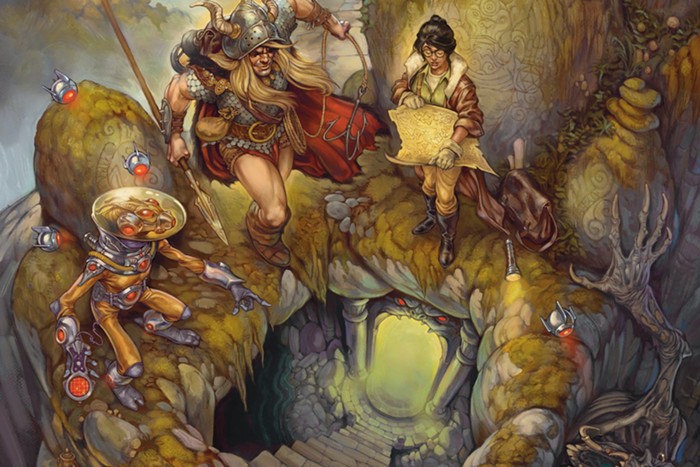It's happened to almost everyone: You're at a hotel, you turn on the TV, and for some reason you start watching a movie you don't recognize. You initially think that the movie is a cop movie, but that cop isn't the main character. There's some romantic tension, but it doesn't intensify. And something really funny just happened: Is this movie a comedy? And why is the soundtrack doing that weird plucking thing with the violins? Is something supernatural about to happen?
When people consume fictions, they experience an urge, so strong that it feels almost reptilian in origin, to categorize the story into a genre, even something as basic as drama. Doug Dorst's debut novel, Alive in Necropolis, toys with this urge and manipulates the reader's expectations to great effect.
Michael Mercer is a young police officer in the small California town of Colma, just outside of San Francisco. One night he finds a teenage boy in a cemetery, naked, duct taped, and beaten unconscious. On recovering, the boy, who turns out to be the son of a well-respected film director, claims to suffer from amnesia. There is some mystery here, but the mystery seems like an afterthought. Mercer is concerned about his girlfriend, who is much older than he is, but it's not a romance. Mercer befriends an old widow whose husband kept meticulous reports of interactions with ghosts in Colma's many cemeteries, and Mercer starts to believe that he can see these ghosts as well. Every 50 pages could be the beginning of a different sort of novel. The reader consistently expects the plot to become something comfortably identifiable, but the genius of Necropolis is that it never does.
Every few years, a talented creator will come along and wow the critics with a piece of work that takes bizarre twists on classic tropes: Quentin Tarantino with Pulp Fiction, Chuck Palahniuk with Fight Club, Zadie Smith with White Teeth. Dorst has not done that here; instead, he hints at tropes that all adults understand unconsciously and tells a story that refuses to embrace any of them. Nobody would describe his or her own life as a comedy, or a tragedy, or a kidnapping drama. Dorst understands this, and Necropolis is so vivid because, like life, it refuses those easy labels.
One more twist: While reading Necropolis, I assumed that the town of Colma—a cemetery town with 2,000 citizens aboveground and more than 2,000,000 buried beneath—was a slightly heavy-handed construct of Dorst's, along the lines of the cemetery town of Lud, New Jersey, in Stanley Elkin's morose comic novel The Rabbi of Lud. But Colma, with its name that suggests coma and its unbelievable bumper-sticker motto "It's great to be alive in Colma," is a real town with a real stop on San Francisco's BART line. ![]()
Doug Dorst reads Sat Aug 2, Elliott Bay Book Company, 2 pm, free.


















